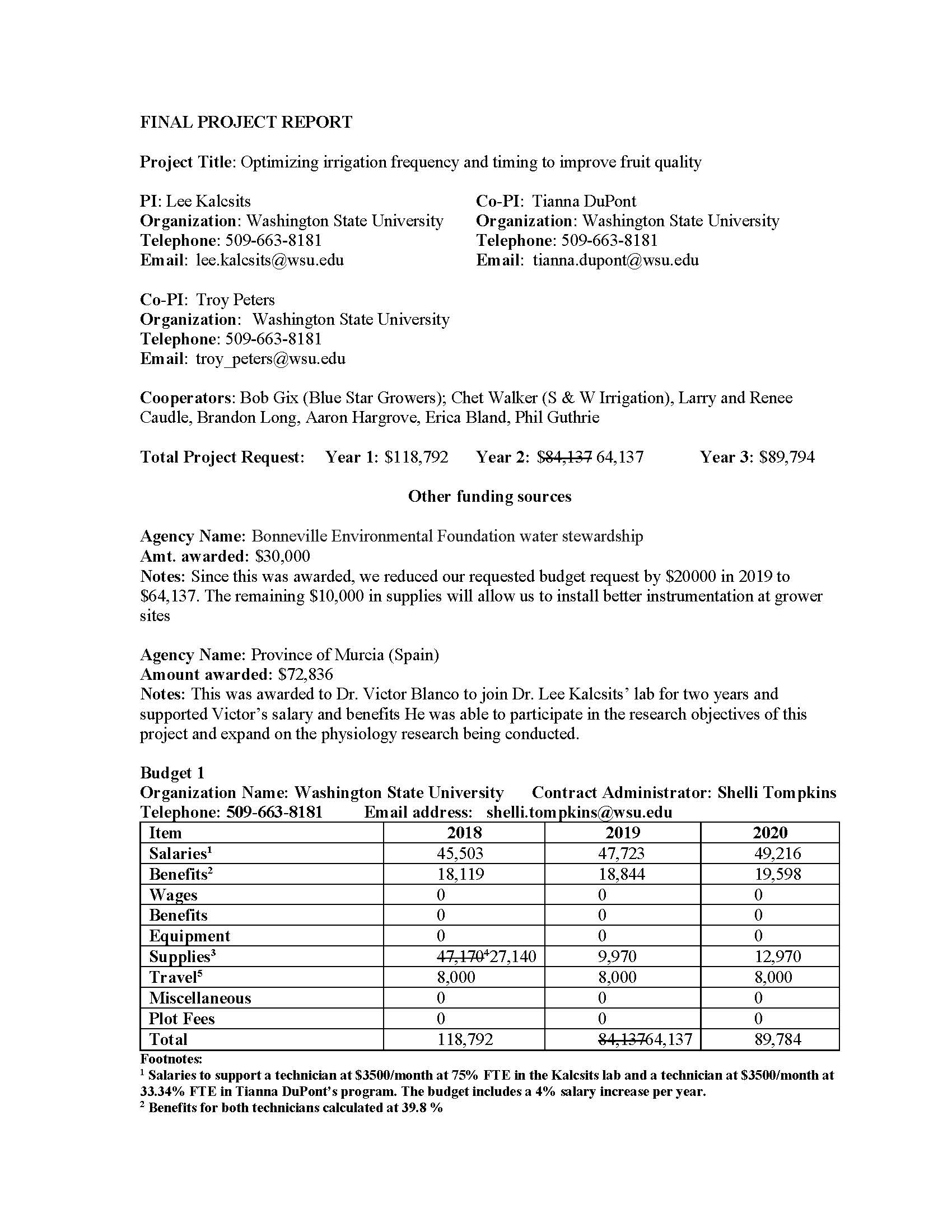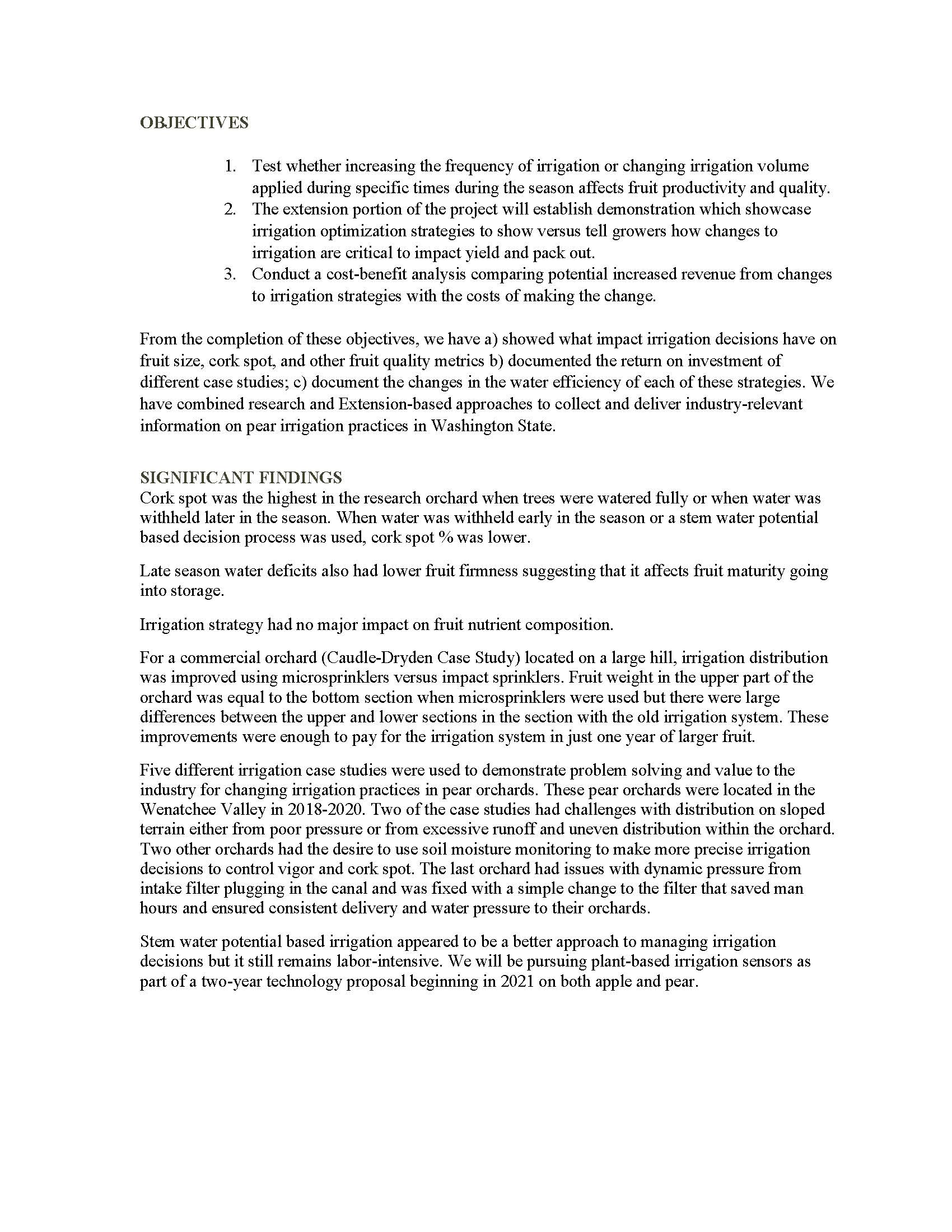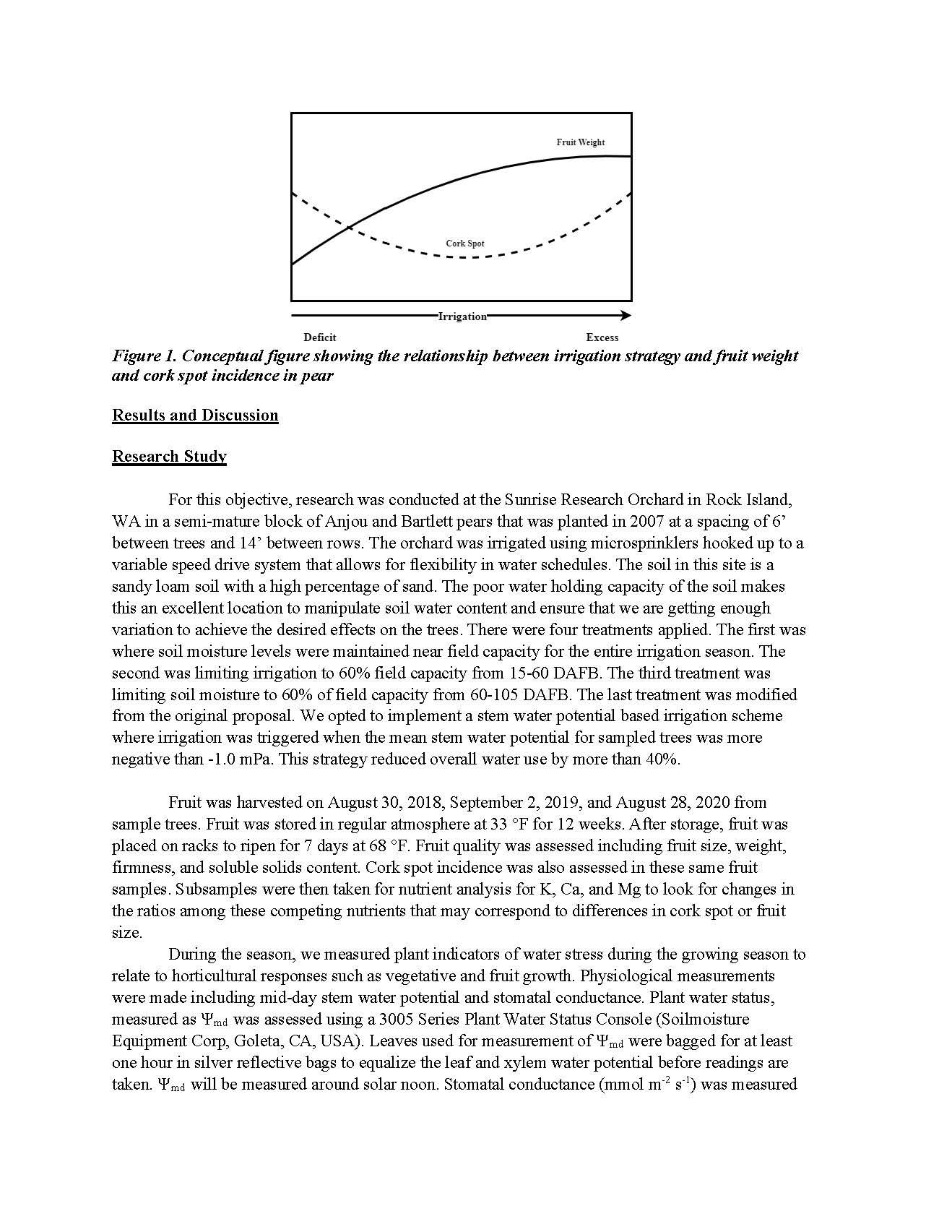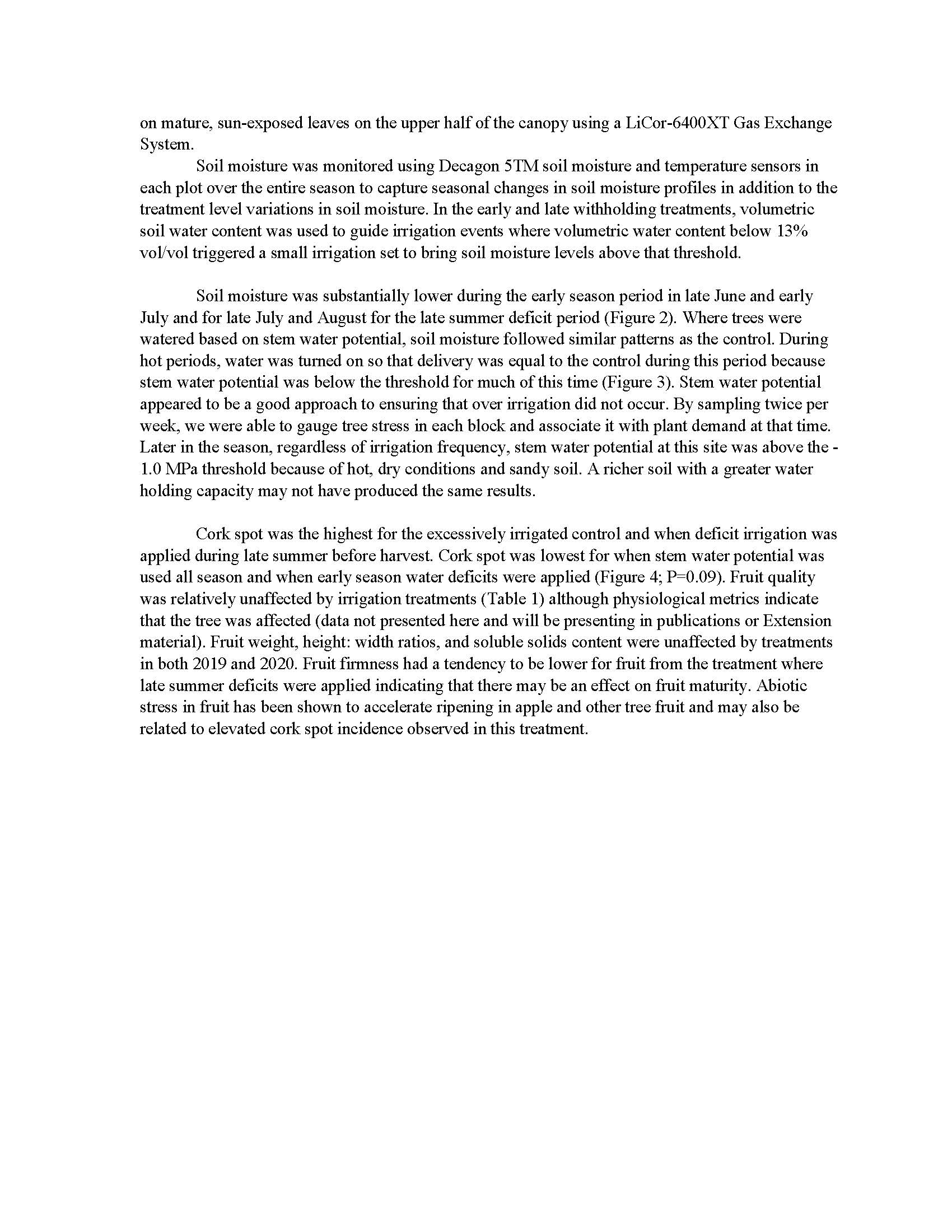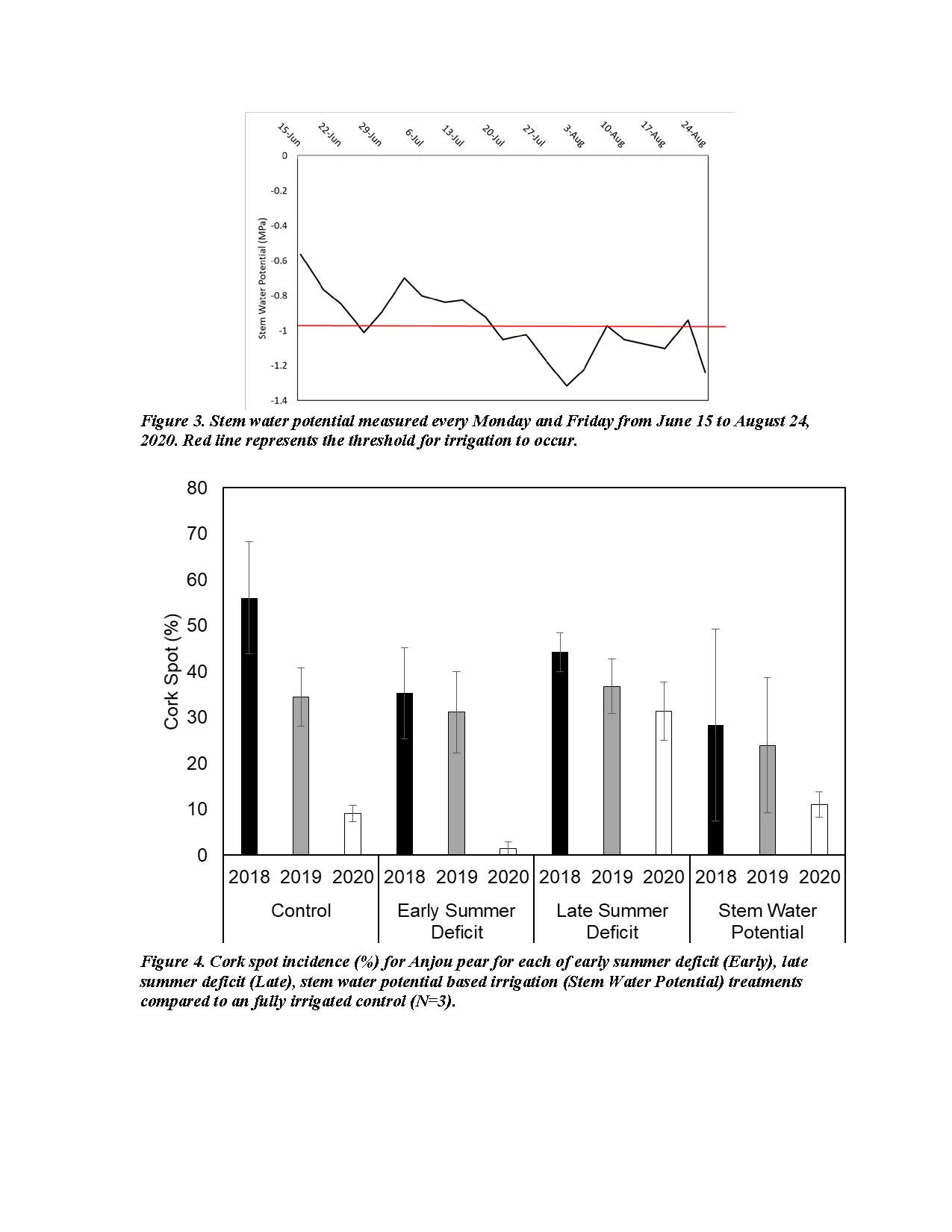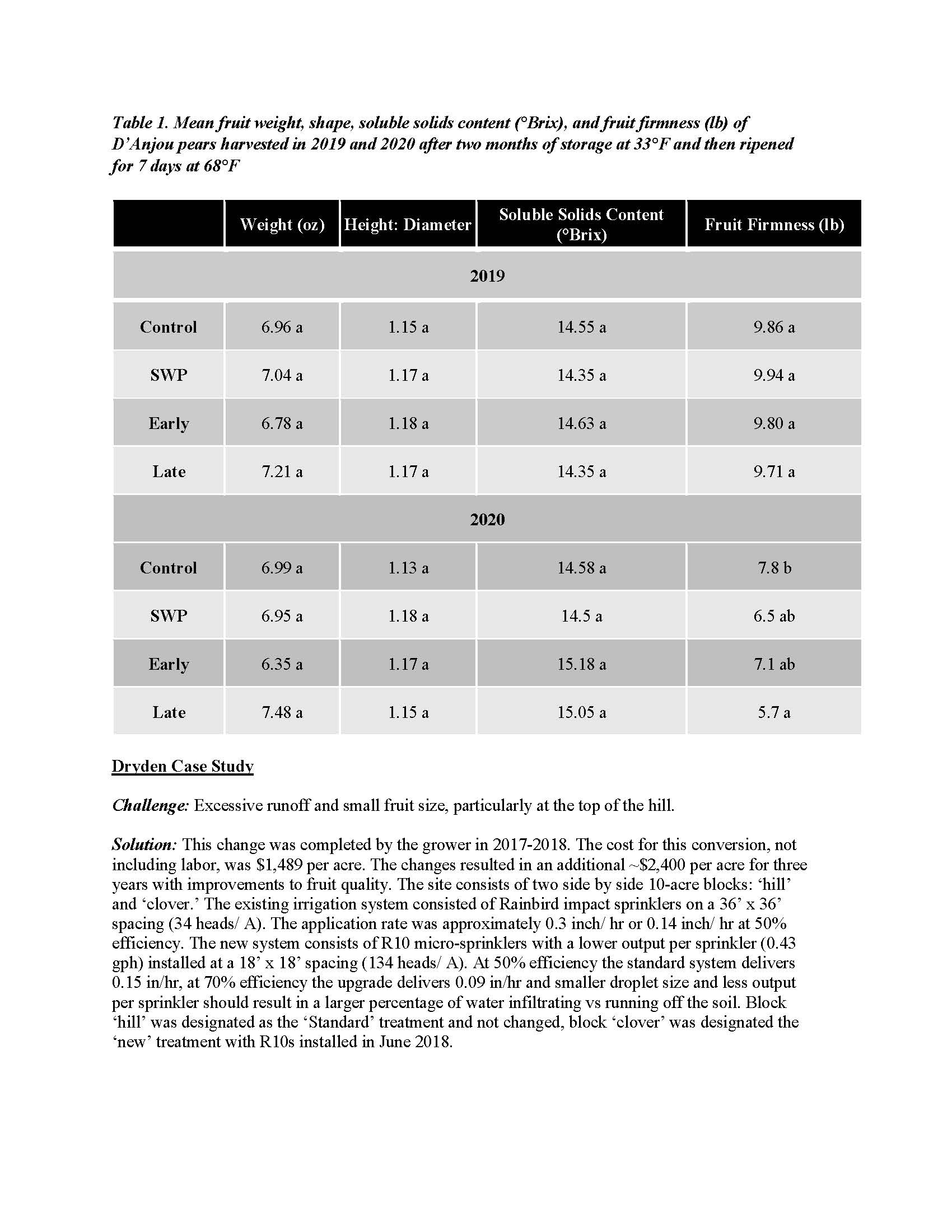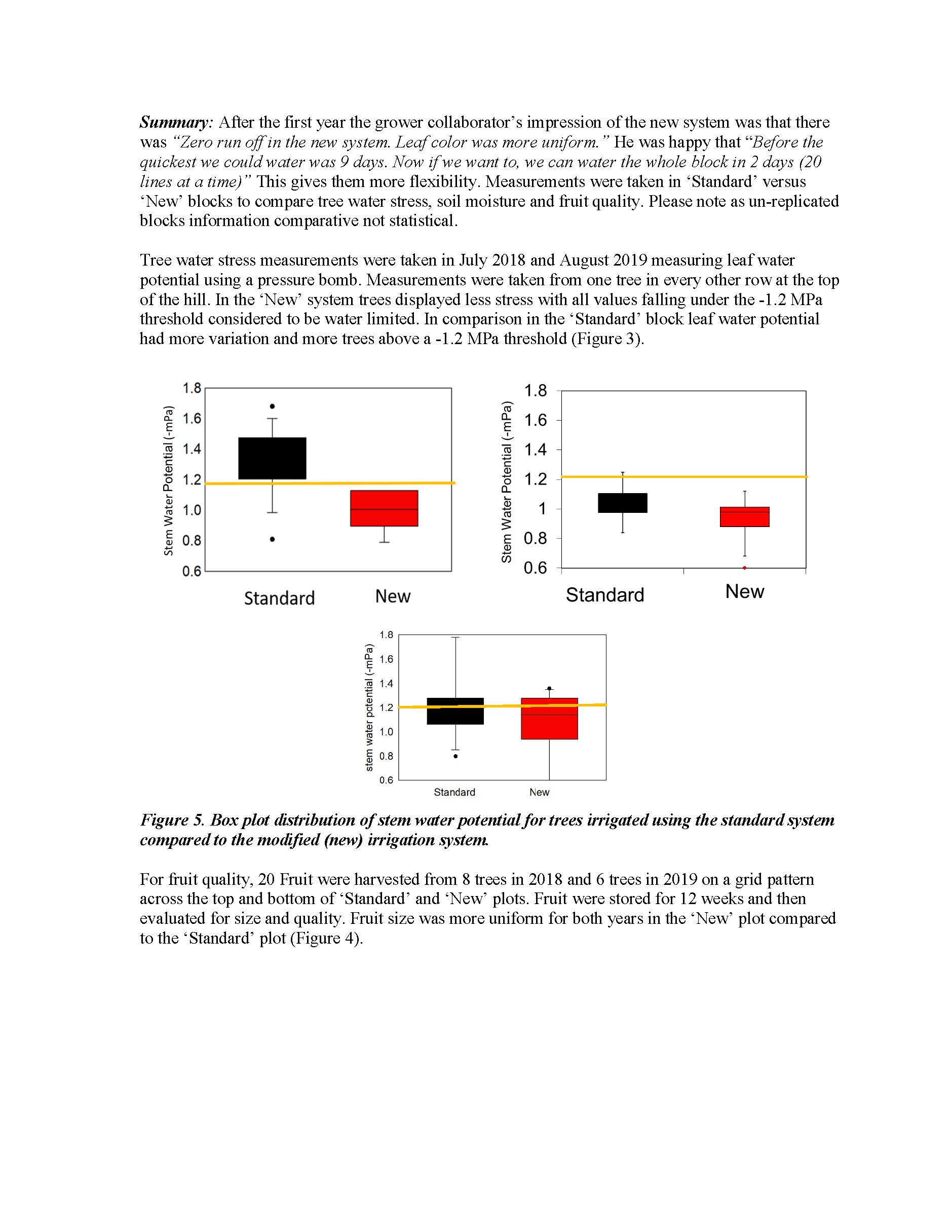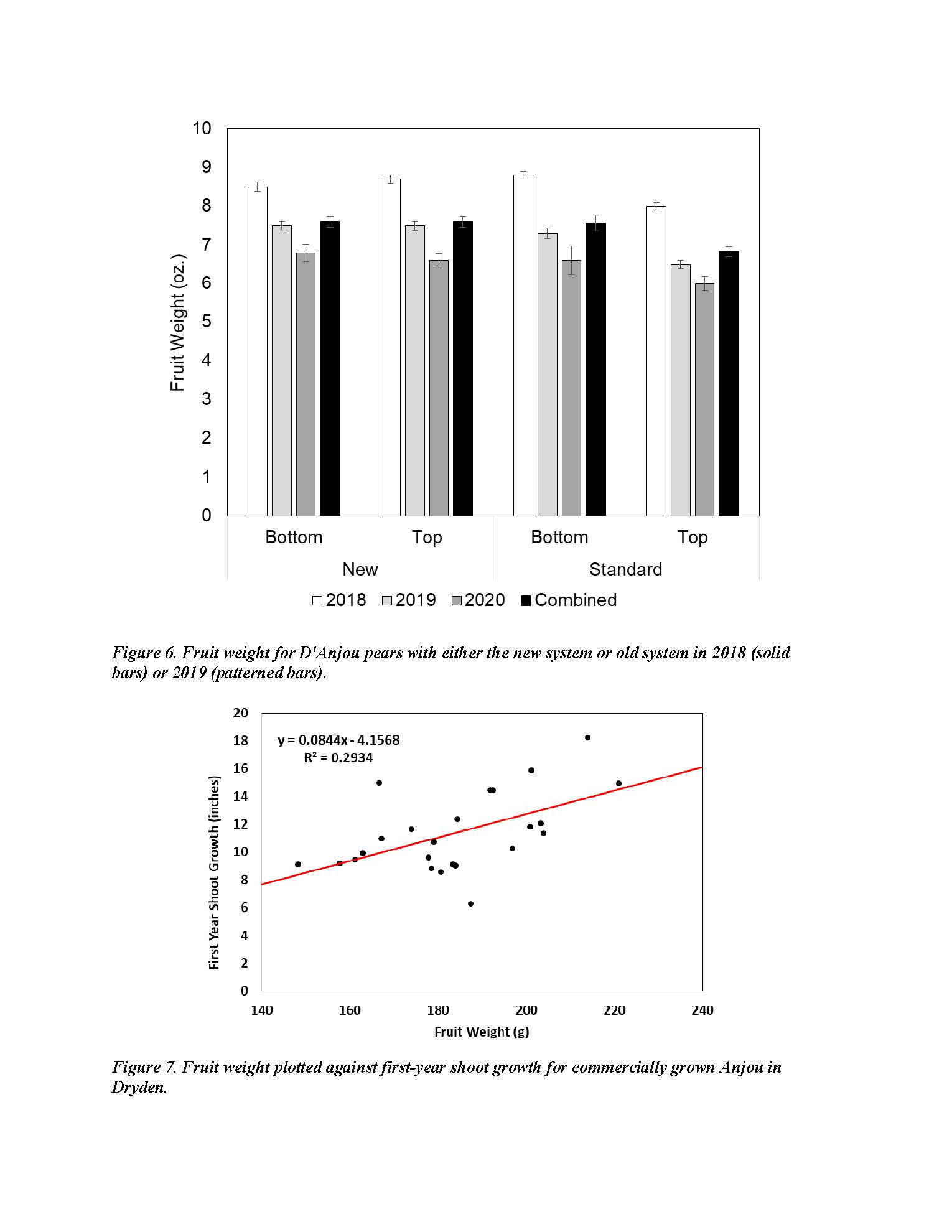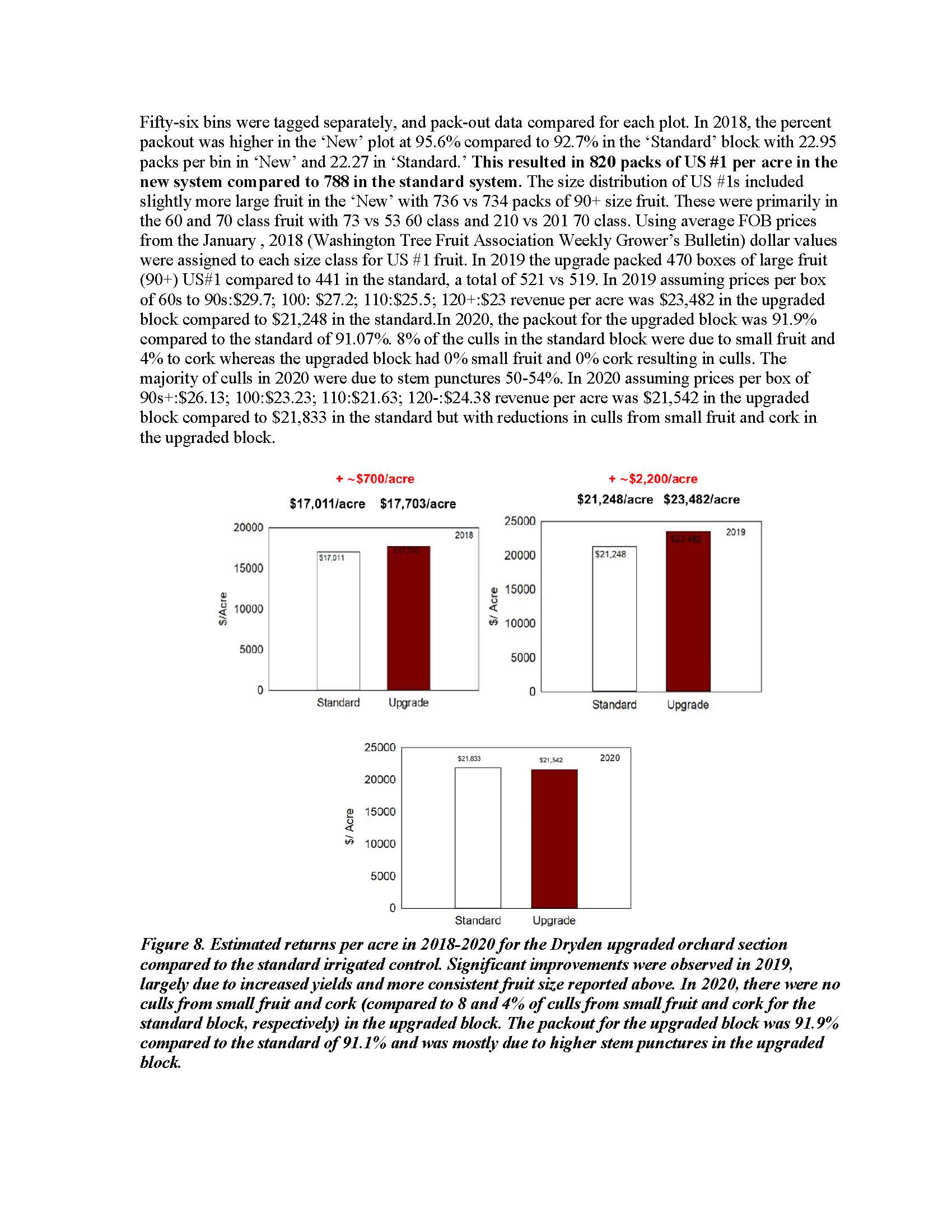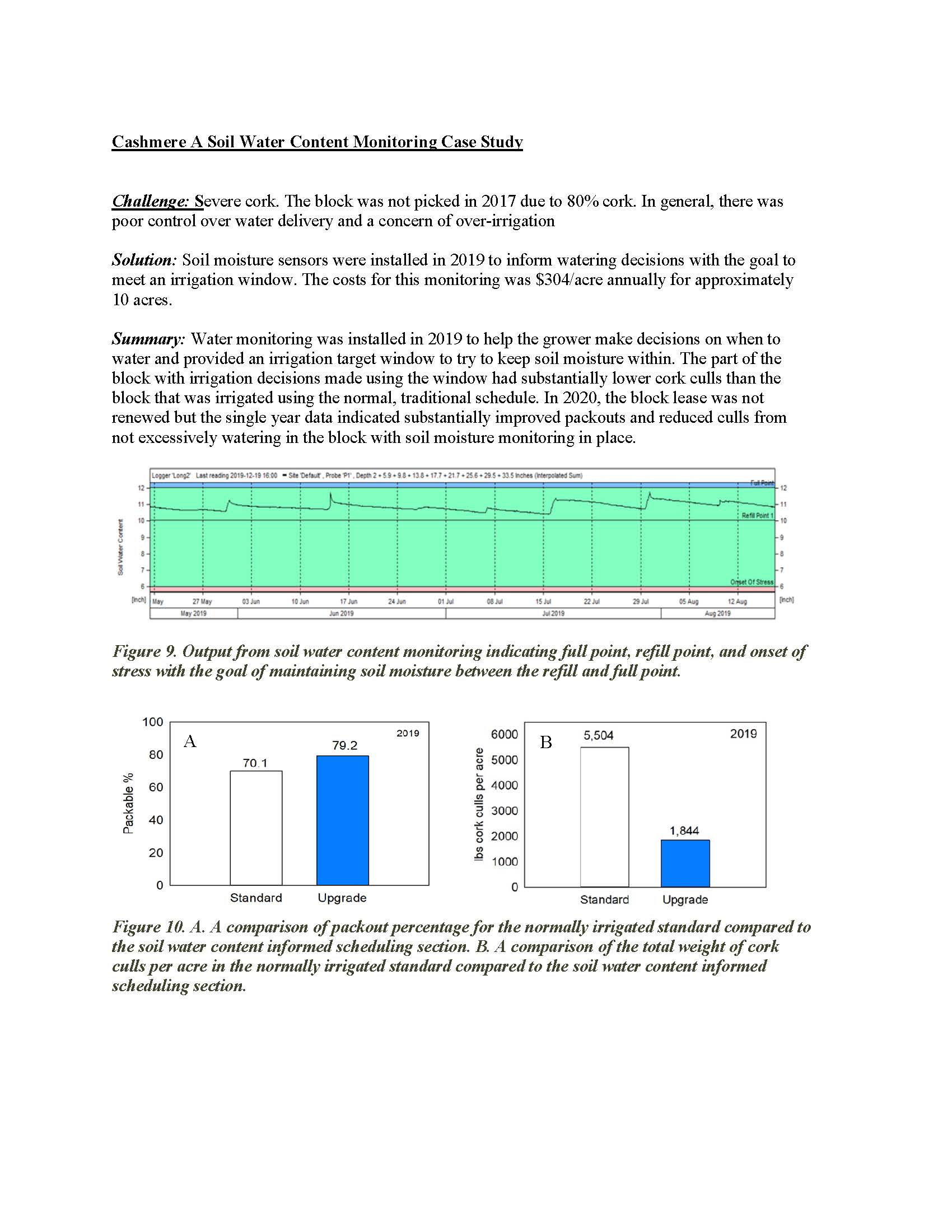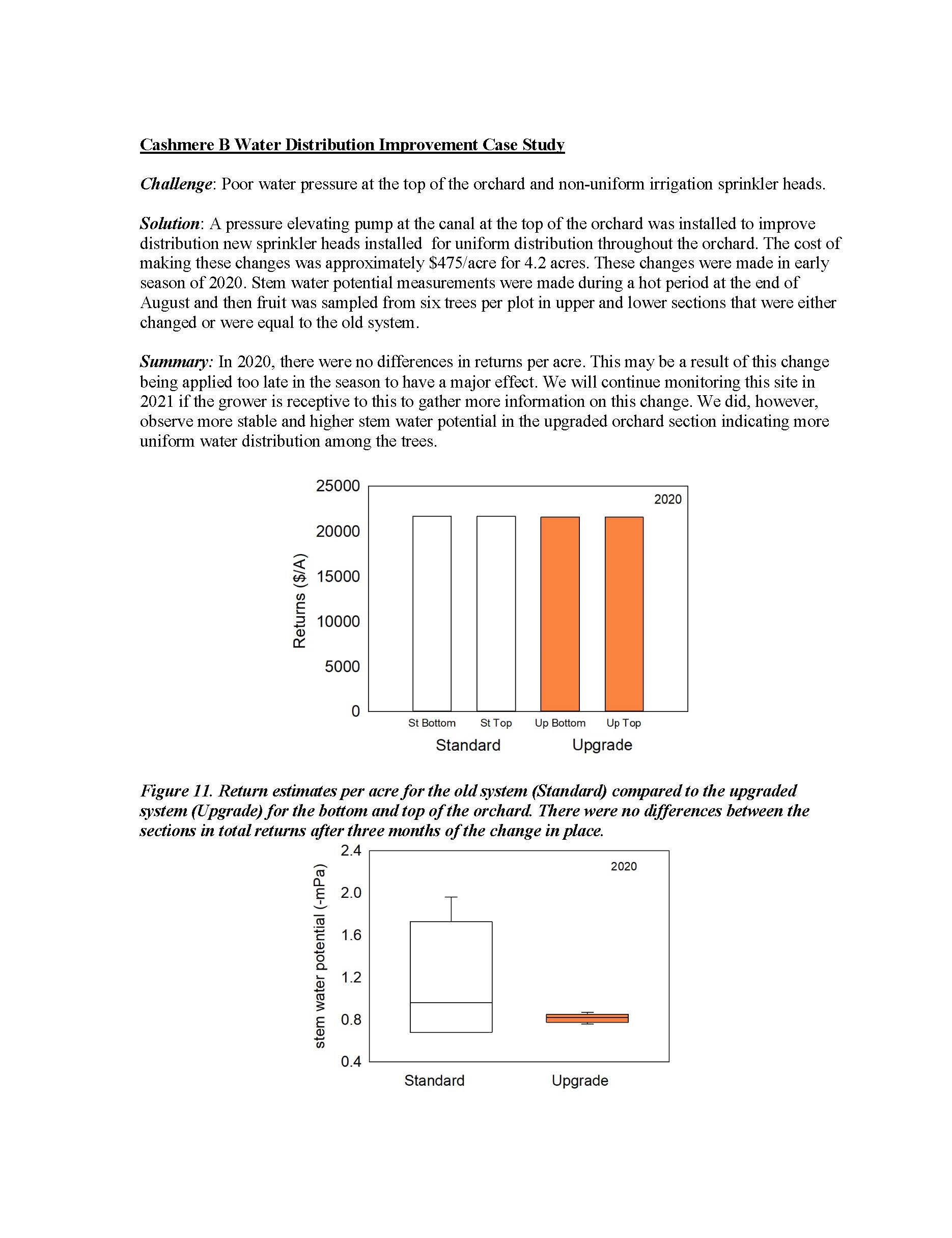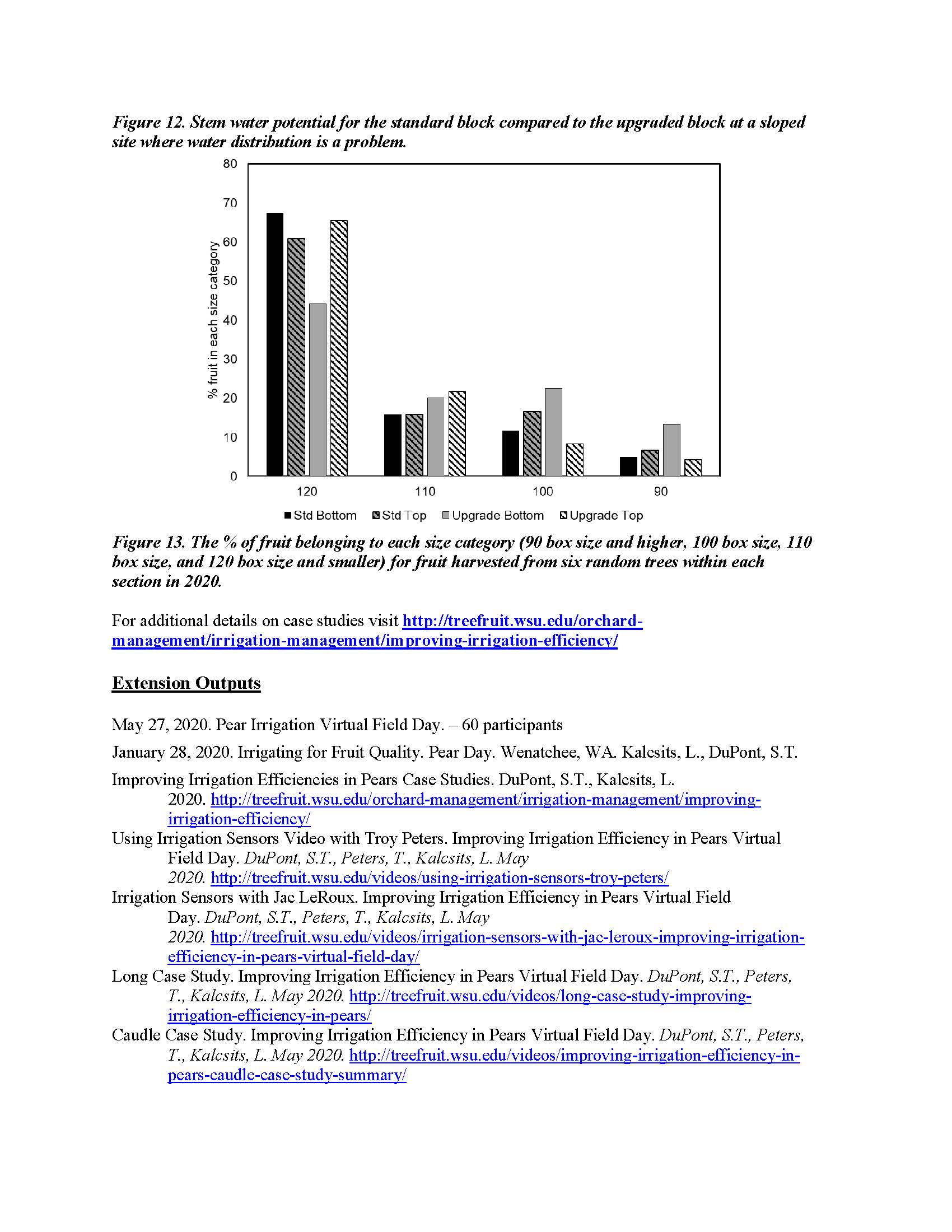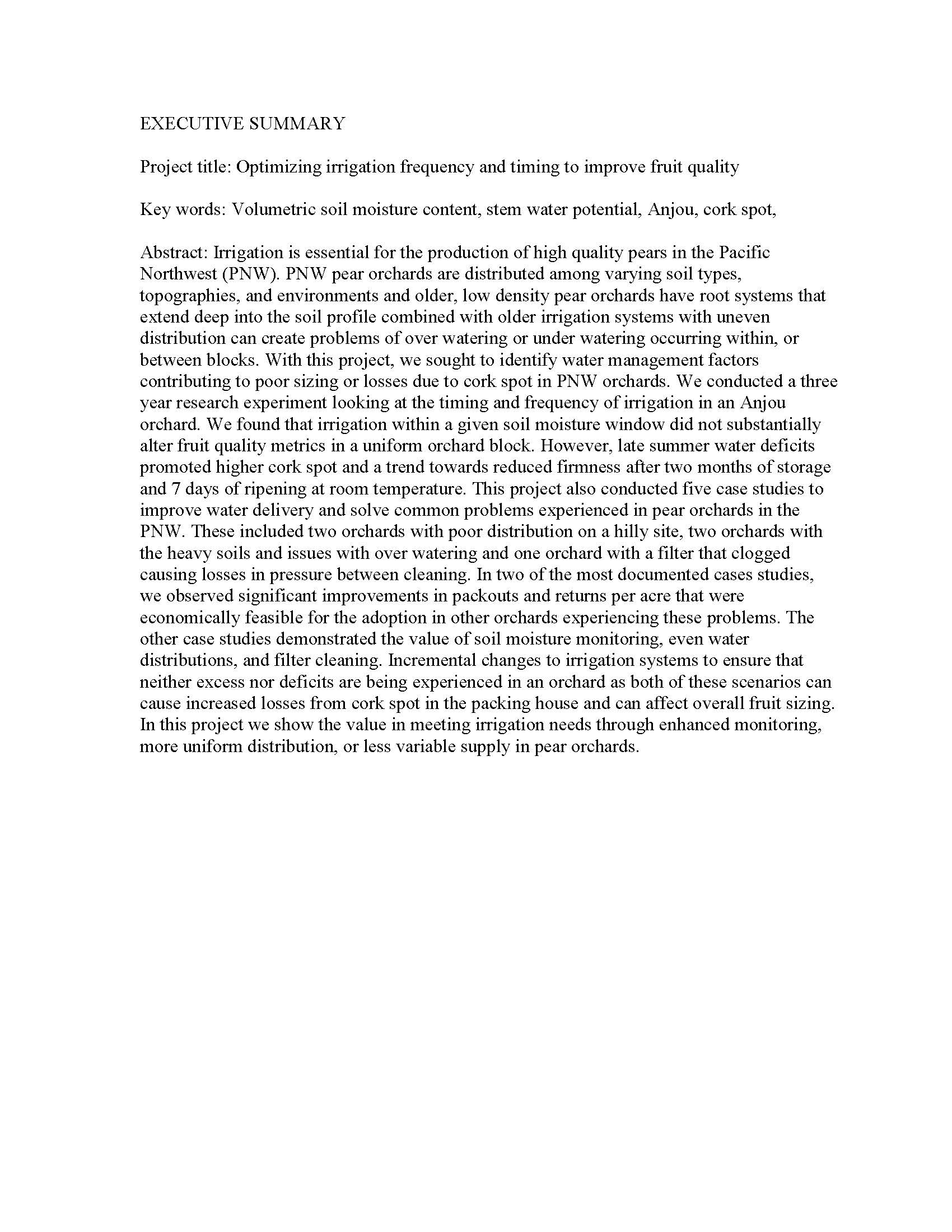Optimizing irrigation frequency and timing to improve fruit quality
Author: Lee Kalcsits, Tianna DuPont, Troy Peters
Published: 2021
Summary: Irrigation is essential for the production of high quality pears in the Pacific Northwest (PNW). PNW pear orchards are distributed among varying soil types, topographies, and environments and older, low density pear orchards have root systems that extend deep into the soil profile combined with older irrigation systems with uneven distribution can create problems of over watering or under watering occurring within, or between blocks. With this project, we sought to identify water management factors contributing to poor sizing or losses due to cork spot in PNW orchards. We conducted a three year research experiment looking at the timing and frequency of irrigation in an Anjou orchard. We found that irrigation within a given soil moisture window did not substantially alter fruit quality metrics in a uniform orchard block. However, late summer water deficits promoted higher cork spot and a trend towards reduced firmness after two months of storage and 7 days of ripening at room temperature. This project also conducted five case studies to improve water delivery and solve common problems experienced in pear orchards in the PNW. These included two orchards with poor distribution on a hilly site, two orchards with the heavy soils and issues with over watering and one orchard with a filter that clogged causing losses in pressure between cleaning. In two of the most documented cases studies, we observed significant improvements in packouts and returns per acre that were economically feasible for the adoption in other orchards experiencing these problems. The other case studies demonstrated the value of soil moisture monitoring, even water distributions, and filter cleaning. Incremental changes to irrigation systems to ensure that neither excess nor deficits are being experienced in an orchard as both of these scenarios can cause increased losses from cork spot in the packing house and can affect overall fruit sizing. In this project we show the value in meeting irrigation needs through enhanced monitoring, more uniform distribution, or less variable supply in pear orchards.
Keywords:

